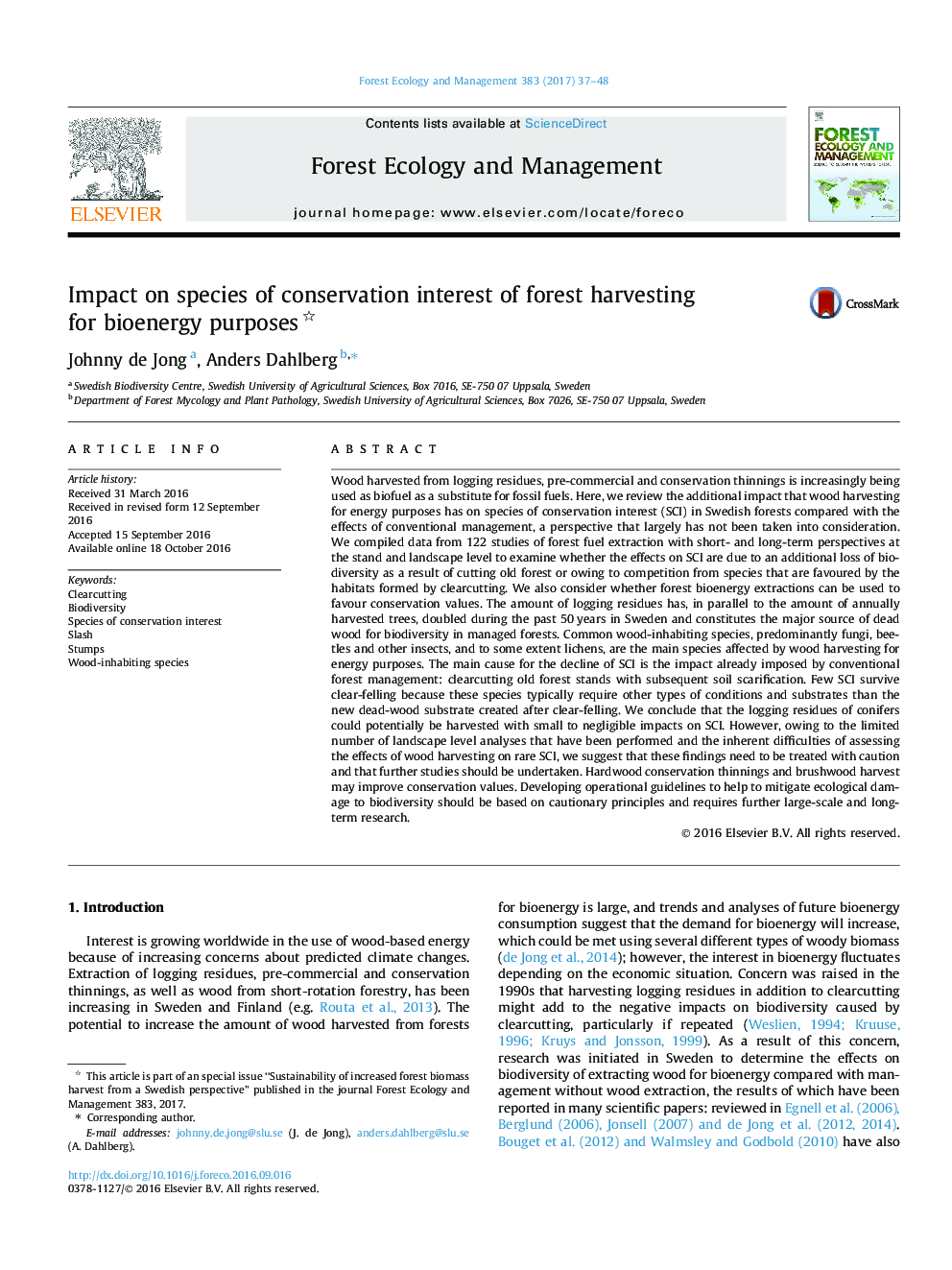| کد مقاله | کد نشریه | سال انتشار | مقاله انگلیسی | نسخه تمام متن |
|---|---|---|---|---|
| 6459594 | 1421375 | 2017 | 12 صفحه PDF | دانلود رایگان |

- Clearcutting causes the decline of forest species of conservation interest (SCI).
- Harvesting logging residues (HLR) has small additional effects on SCI.
- HLR mainly impacts common wood-inhabiting generalists living on logging residues.
- Harvesting conservation thinnings and brushwood may improve conservation values.
Wood harvested from logging residues, pre-commercial and conservation thinnings is increasingly being used as biofuel as a substitute for fossil fuels. Here, we review the additional impact that wood harvesting for energy purposes has on species of conservation interest (SCI) in Swedish forests compared with the effects of conventional management, a perspective that largely has not been taken into consideration. We compiled data from 122 studies of forest fuel extraction with short- and long-term perspectives at the stand and landscape level to examine whether the effects on SCI are due to an additional loss of biodiversity as a result of cutting old forest or owing to competition from species that are favoured by the habitats formed by clearcutting. We also consider whether forest bioenergy extractions can be used to favour conservation values. The amount of logging residues has, in parallel to the amount of annually harvested trees, doubled during the past 50Â years in Sweden and constitutes the major source of dead wood for biodiversity in managed forests. Common wood-inhabiting species, predominantly fungi, beetles and other insects, and to some extent lichens, are the main species affected by wood harvesting for energy purposes. The main cause for the decline of SCI is the impact already imposed by conventional forest management: clearcutting old forest stands with subsequent soil scarification. Few SCI survive clear-felling because these species typically require other types of conditions and substrates than the new dead-wood substrate created after clear-felling. We conclude that the logging residues of conifers could potentially be harvested with small to negligible impacts on SCI. However, owing to the limited number of landscape level analyses that have been performed and the inherent difficulties of assessing the effects of wood harvesting on rare SCI, we suggest that these findings need to be treated with caution and that further studies should be undertaken. Hardwood conservation thinnings and brushwood harvest may improve conservation values. Developing operational guidelines to help to mitigate ecological damage to biodiversity should be based on cautionary principles and requires further large-scale and long-term research.
Journal: Forest Ecology and Management - Volume 383, 1 January 2017, Pages 37-48